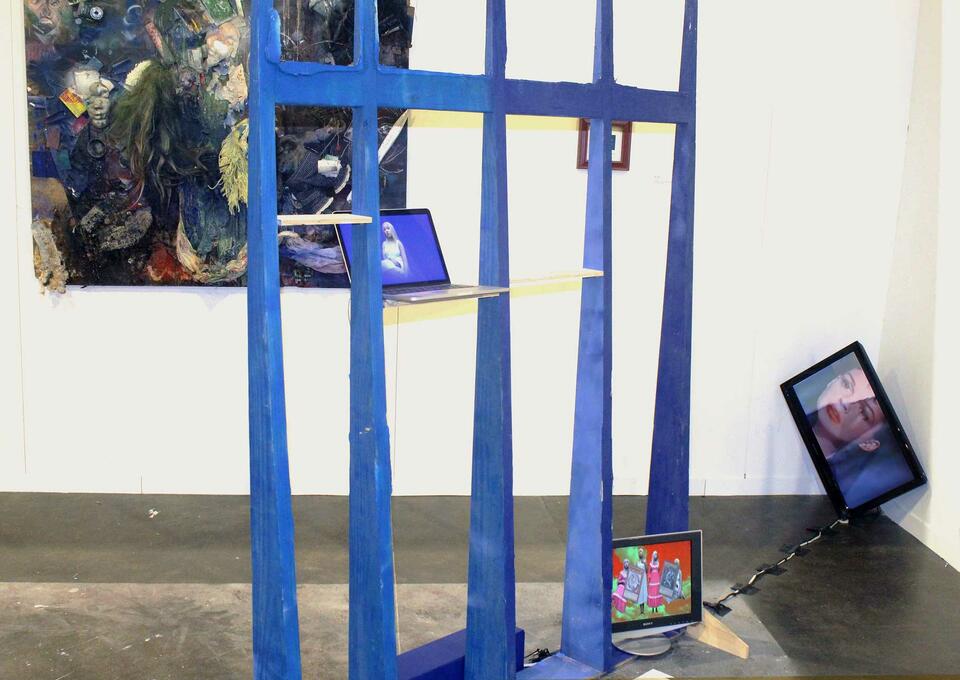Aaron Feltman
Sweet Relief
For Aaron, relief holds both an emotional and a physical connotation; both the lifting of a burden and the description of an object with forms that protrude from a planar surface. In his work, Aaron explores the ways in which these connotations can inform each other through the creation of hand-carved wooden reliefs.
Wood, a material grown from the earth, is transformed into an entirely human-created form, the car; embodying the just-as-human longing for freedom and individualization through the construction of a privatized space, perfectly designed to accommodate human desires. The car can thus act as a bridge between private and public spaces and models a division of the interior and exterior both physically and psychologically.
When the Last Leaves Fall
Across a room, across the world, outside my car—in relief, you are close enough to touch. When figures overlap, the contour of your cheek follows the hills and valleys of the figure behind, collapsing the space between you.
Within relief, space is illusory.
Here, a world is constructed to be understood from a single perspective, a solitary point, a frontal view from which the form is read and understood with clarity. But what happens when the body moves, when that perspective shifts?
Image
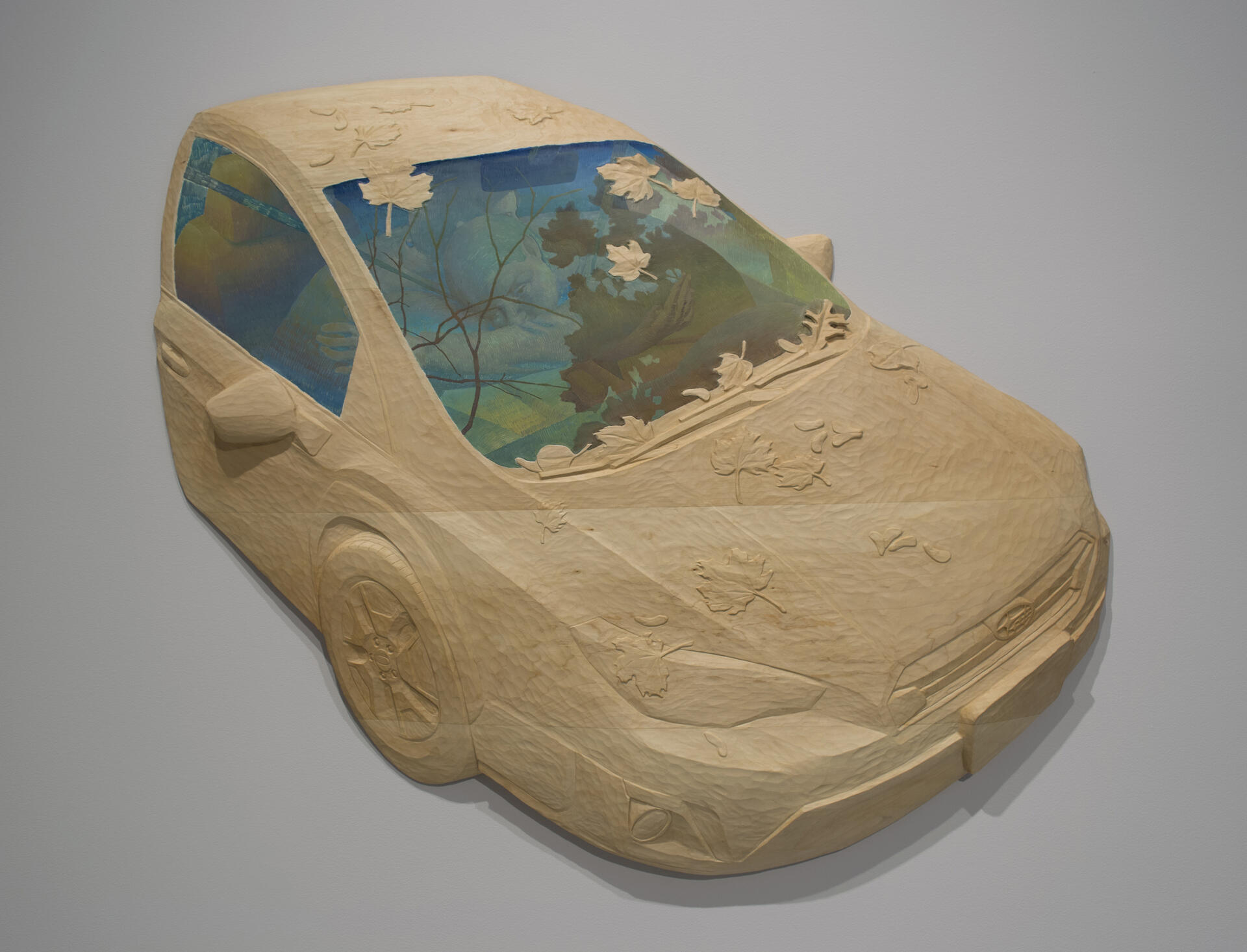
When The Last Leaves Fall, 40”x48”x3”,Egg tempera on hand-carved basswood, 2024
Baby in a Hot Car
Relief bridges between the two-dimensional and three-dimensional. It relies on a kind of anamorphic perspective, a logic that holds strictly to one point of view and falters when an audience moves beyond that point. In this way, relief opens up the potential for queer space. That which pushes against the normativity of the frontal view. When we deviate from this singular perspective of normalcy, we instead experience a visceral reaction to the slippage—we are confronted with disorientation. I want to explore the limits of this potential. To make work that engages multiple points of view which push up against each other even to the point of conflict. To embrace the murky, in-between space of the unknowable and the uncertain. To live with contradiction.
Image
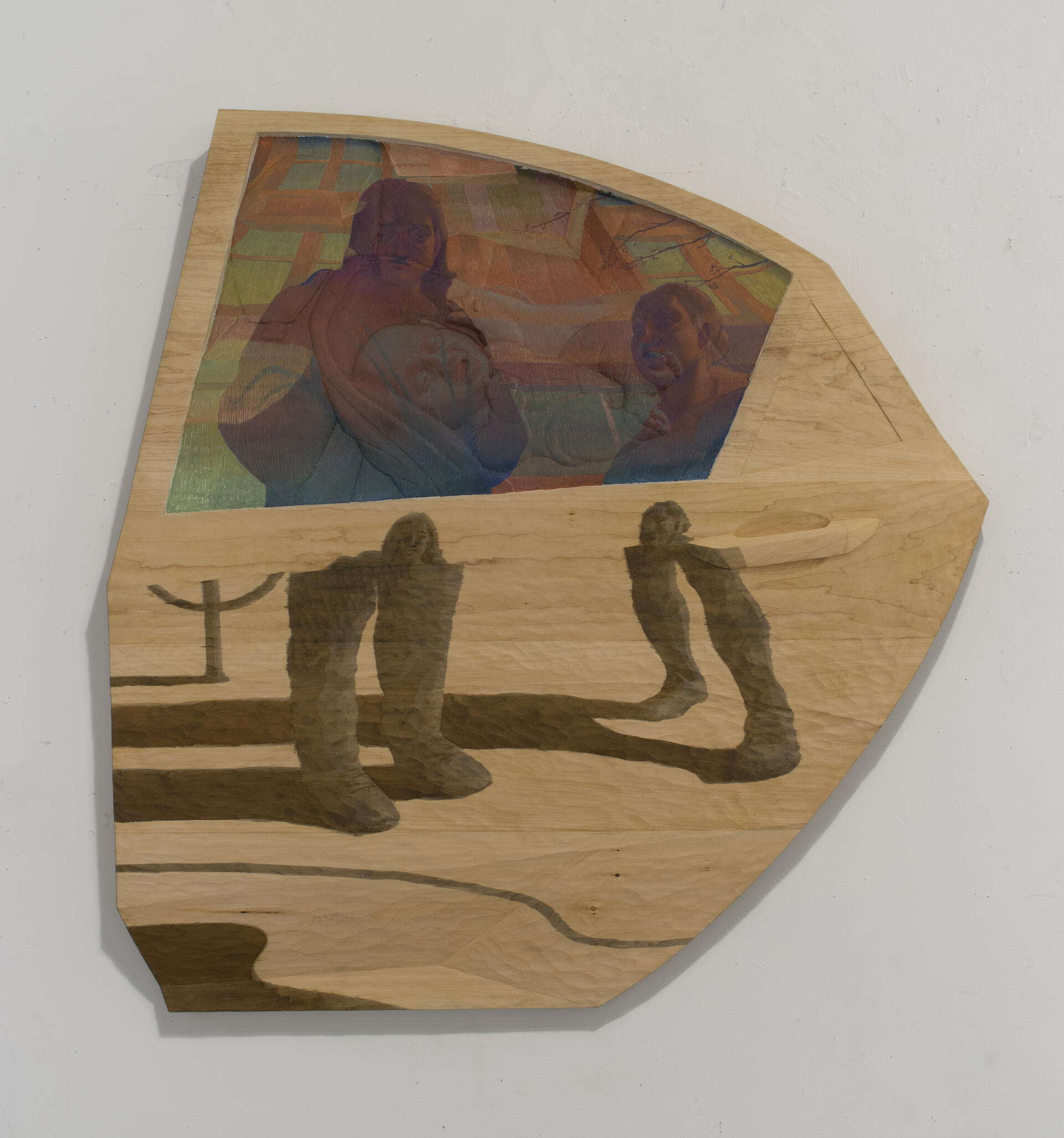
Baby in a Hot Car, 41"x40"x2”, Egg tempera on hand-carved basswood, 2024
Stopped at a Red Light
What happens when we’re alone in our car? When we’re behind the wheel, we are stripped of our identity, no matter how many corny bumper stickers we slap on our trunks. We assume the skin of our vehicle and the associations that come with it; the nuclear family ideal of a minivan, the expression of a midlife crisis from a Saturn Sky, the crunchy-queer suggestion of a Subaru. We build a new identity but are also blinded to others’. We become alienated from our fellow drivers when we can no longer see their faces on the road, unable to make eye-contact and form a recognition of our shared humanity. As we take on the new skin of our car, the interior of our car becomes our own interior. Inside our car, we are reverted back to the womb, protected from the outside world by steel and glass.
Image
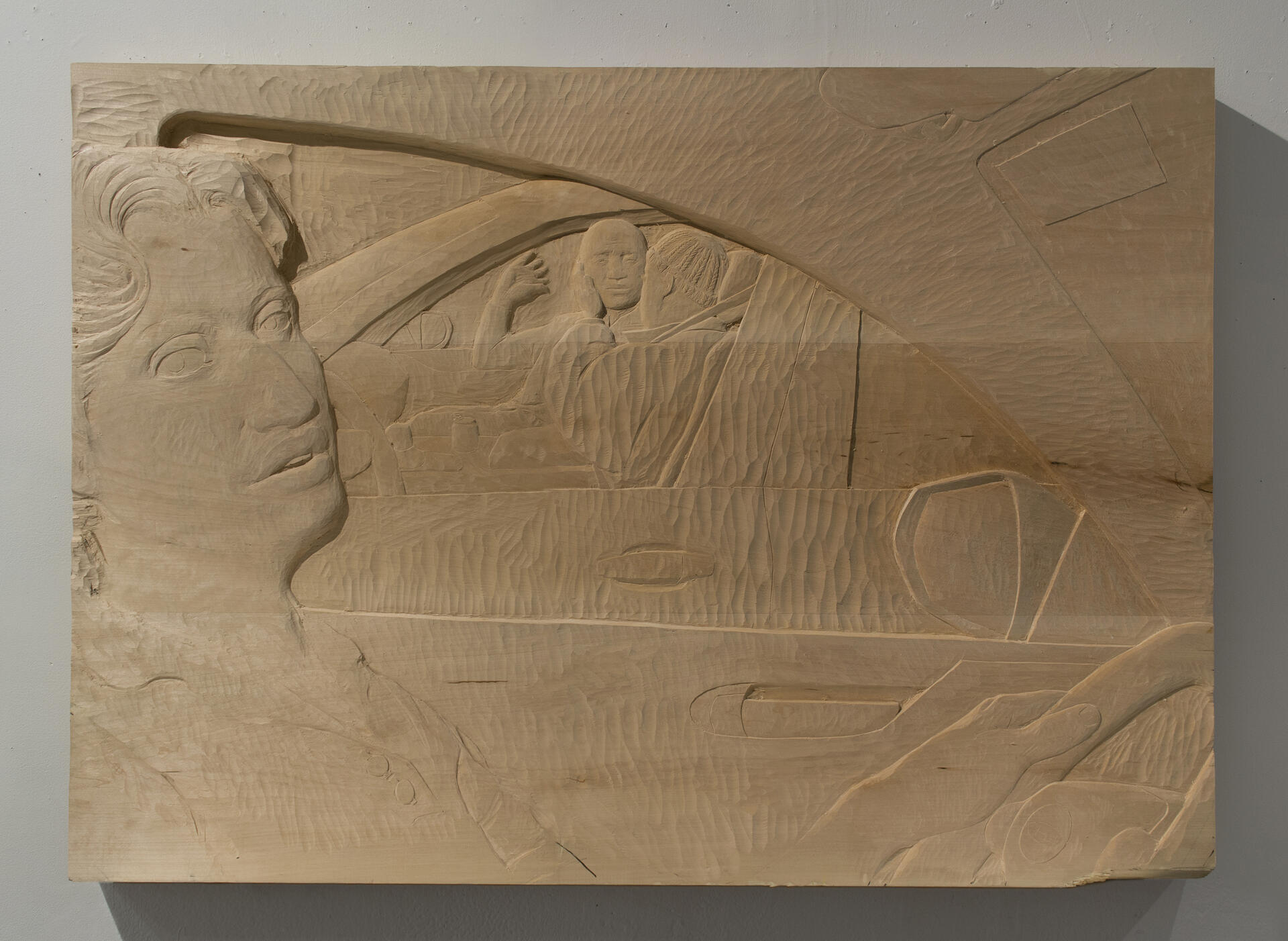
Stopped at a Red Light, 36”x48”x2”, Basswood, 2023
Joyride
Cars line the street on the edge of India Point Park as I ride my bike home from class at dusk. As I speed past each car, my eyes drift back to the window and linger for a millisecond, hoping to catch a glimpse of some action inside. But I can never see past the inky reflection of the night sky. My friend pointed out to me that once you become aware that cruising exists, you start to see the possibility of cruising everywhere you go. Spaces become charged with a new potential for the erotic. The car becomes a space of desire even when no bodies are present. Even as my work drifts away from the explicit, it searches instead for the potential for the erotic within the everyday.
Image
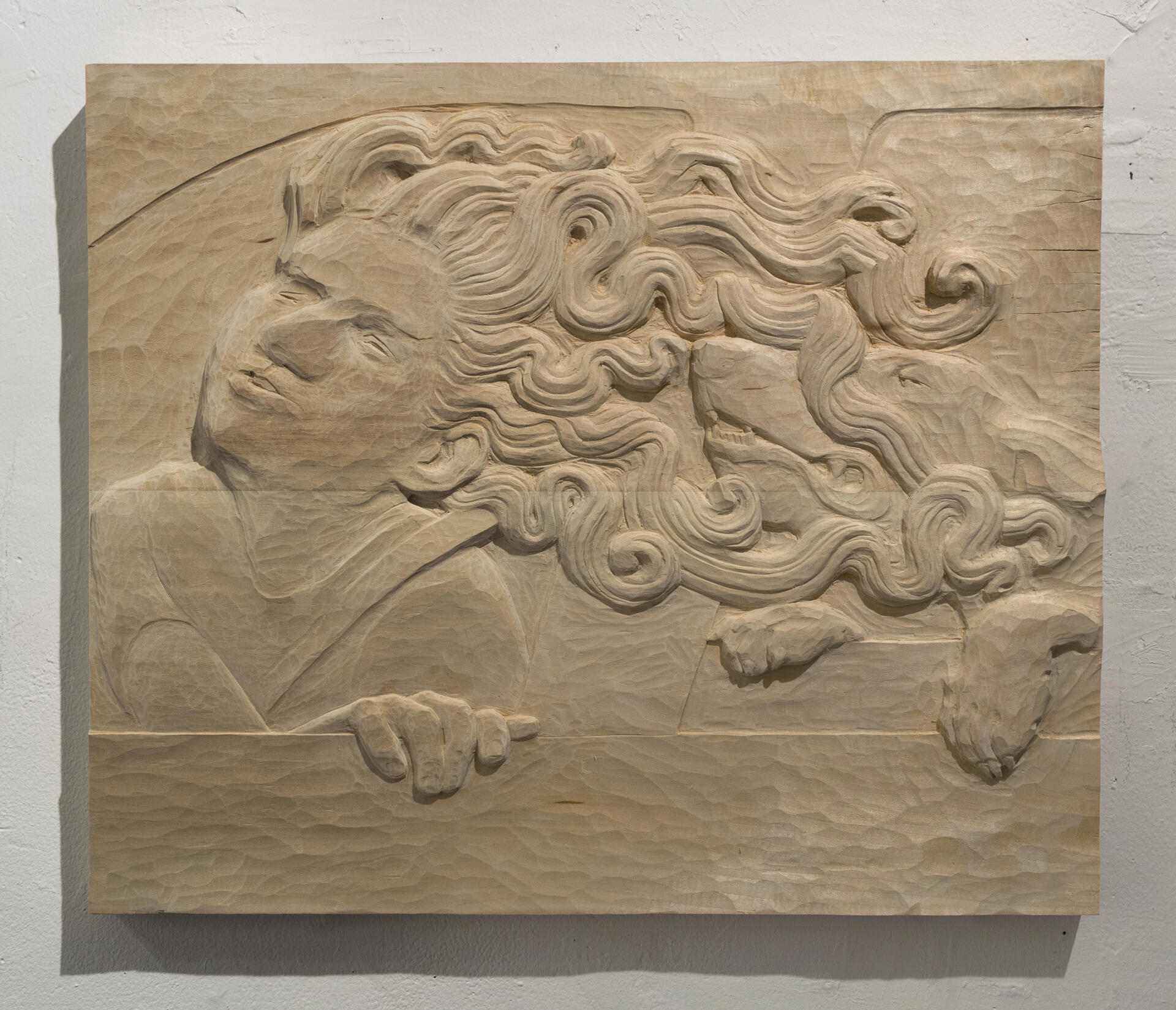
Joyride, 20”x24”x2”, Basswood, 2023
Untitled
On a bus, plane, train, or subway, we are moving side by side with strangers in the same direction, toward the same destination- our orientation towards the world is shared. From this common ground, a connection is formed. However thinly tethered, we become united in a shared sense of humanity.
“Spirituality is recognizing and celebrating that we are all inextricably connected to each other by a power greater than all of us, and that our connection to that power and to one another is grounded in love and compassion. Practicing spirituality brings a sense of perspective, meaning, and purpose to our lives.”
-Brene Brown, The Gifts of Imperfection
Image
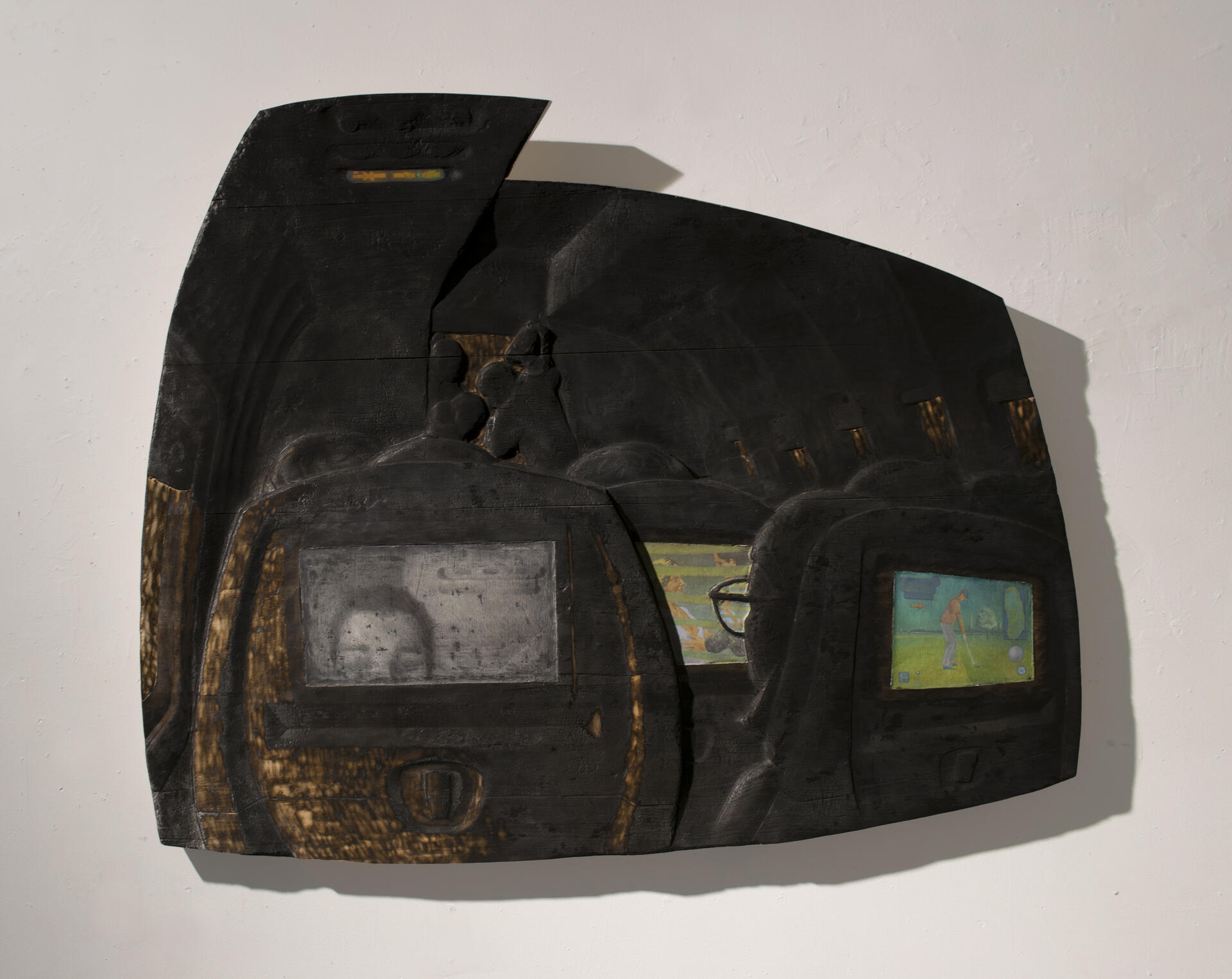
Untitled, 48"x43"x2”, Egg tempera and graphite on hand-carved basswood, 2024
Open Window
By spending time with the carving, I wish to instill in it a sense of devotion and care that is palpable. Drawing with charcoal or making clay maquettes offers me an immediacy of mark-making that easily translates my bodily presence through the residue of my fingerprints. They directly indicate a surface that my hands have touched and caressed. With carving there is instead a sense of separation. My hand is mediated by a tool that produces a uniform mark; a repetitive mark that, as it moves across the surface of the relief, marks time. My hands run across the clay maquettes as I carve, allowing me to determine how deeply I should plunge my gouge. Engaging my sense of touch, I am able to use the tactile surface of the clay to translate what was once immediate into something desperately slow.
Image
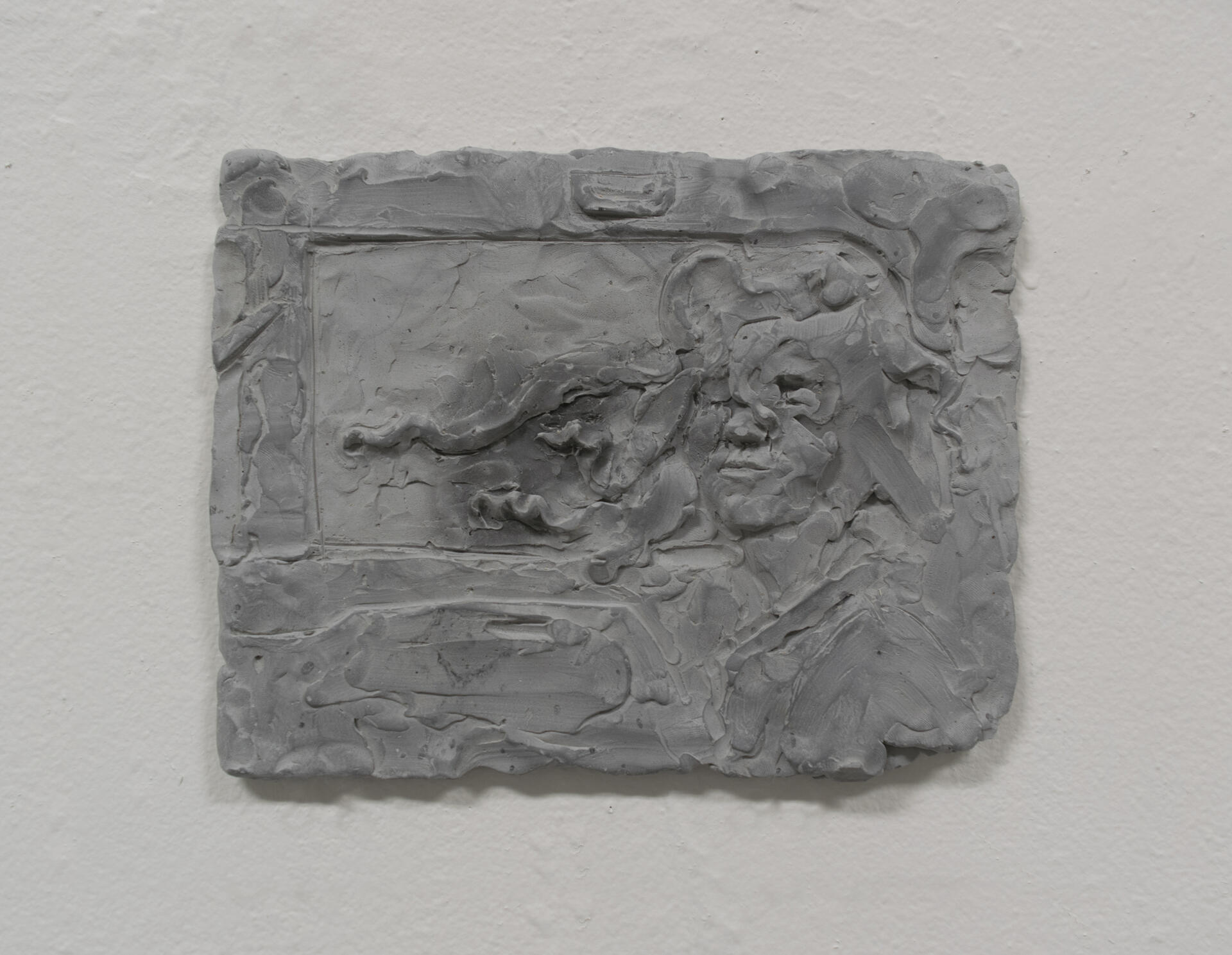
Open Window, 10”x8”x1”, Graphite and Plaster, 2023
Car Park
Both the car and wood hold masculinity in their grain. A masculinity that is passed down from father to son through shared labor and time.
Yet, both wood and the car have another side to them as well. The car is an intimate space, its close quarters force within its passengers a physical awareness of each other's bodies. Wood, though solid and heavy, retains its vitality beyond the grave. It reacts to its surroundings, absorbing moisture from the air and cracking and shifting in accordance to its environment. While the ideals of masculinity may be laden within the social conscription of wood and cars, they both put up a resistance to these markers and yearn for fluidity and tenderness, aspects I hope to access in my work.
Image
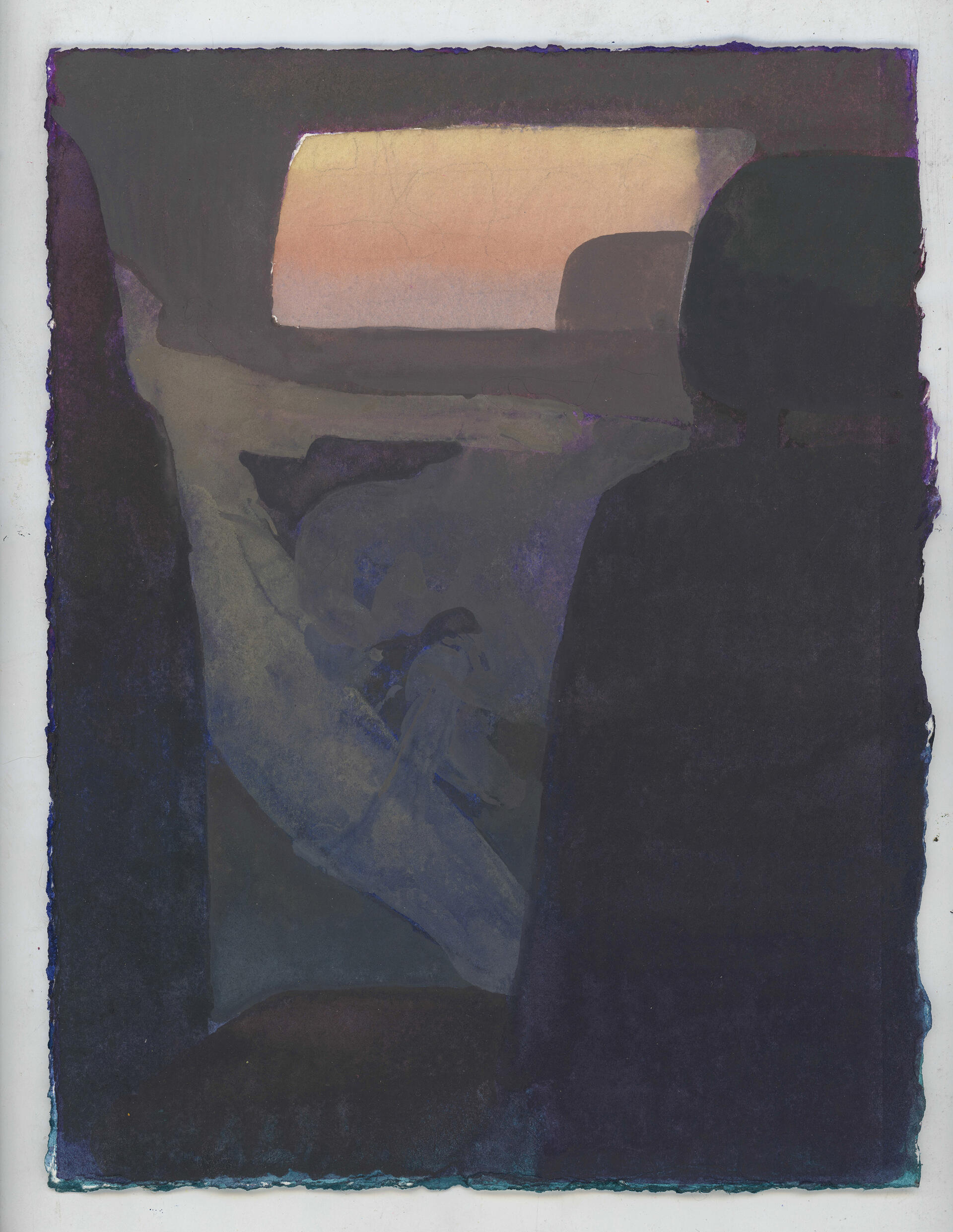
Car Park, 10”x8”, Gouache on paper, 2023
Roadtrip to Maine
The car window acts as a portal; an entry point and an intermediary between private and public space. One can see in through a tinted lens, darkening the figures within to a murky silhouette. One can also see out, the window acting as a framing device for the world around them. What we see while driving, the girl crying by the dumpster behind a bar, the homeless man begging for change at a red light, the tender caress of a couple in another car—only intended for them two. All of this we see from the frame of our car window, whether a frame of removal, of voyeurism, of safety, or alienation. The window frame acts as a recognition of a state of self-consciousness, the everpresent awareness of our body, presence, perspective, and the limits to which those extend.
Image
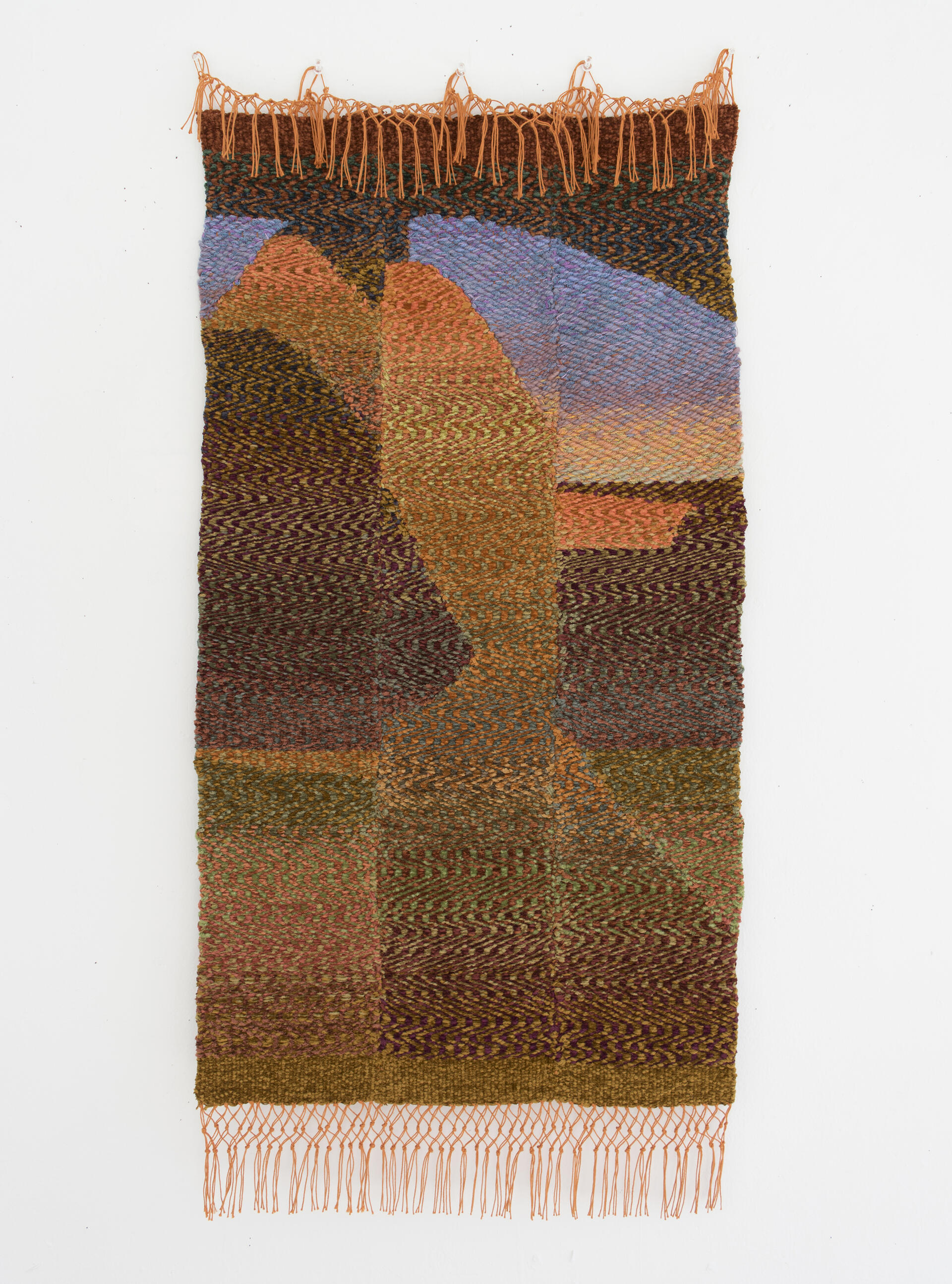
Roadtrip to Maine, Hand-woven rug, 48”x36”, 2023
EXHIBITION IMAGES
